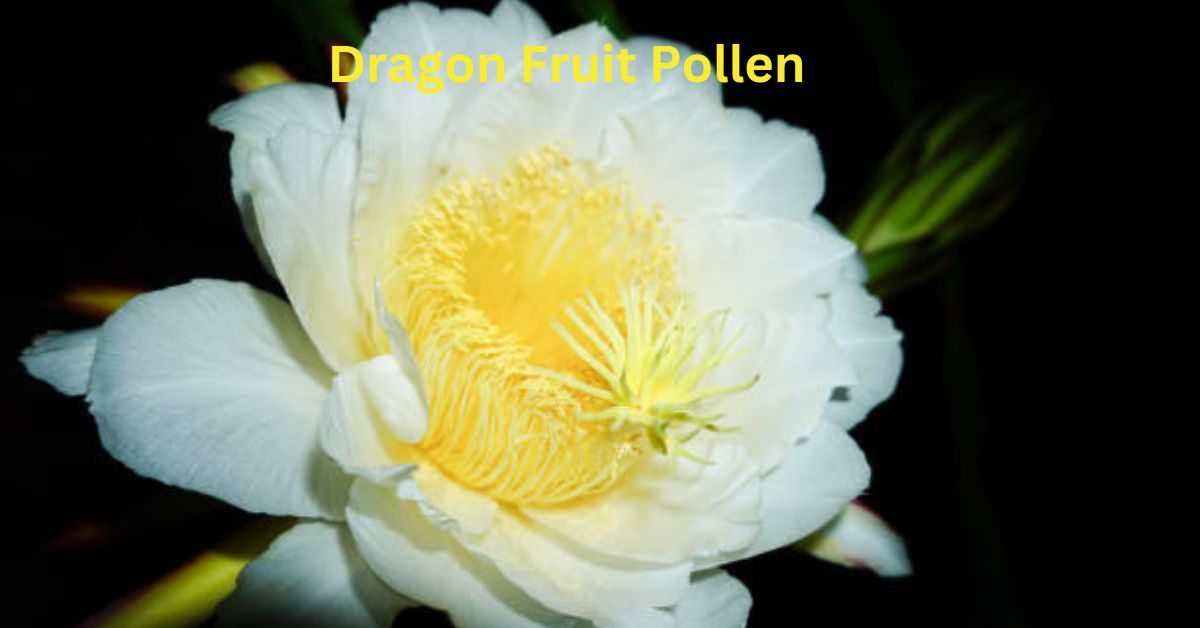Dragon Fruit Pollen Storage
Dragon fruit, with its vibrant colors and delicious taste, is a tropical fruit that has gained popularity in gardens around the world. However, cultivating this unique fruit often requires more than just planting seeds—it requires a deep understanding of its reproductive process, particularly when it comes to pollination. While hand pollination is a widely used method to enhance fruit production, its success depends heavily on the quality of the pollen. This article outlines the most effective techniques for storing dragon fruit pollen, ensuring its viability and optimizing your chances of a fruitful harvest.
The Sensitivity of Dragon Fruit Pollen
Dragon fruit pollen is delicate and highly sensitive to environmental factors like moisture, temperature, and contaminants. Proper storage is essential because improper conditions can quickly degrade the pollen’s viability. Pollen grains contain the male gametes, and if not stored correctly, these grains can lose their ability to fertilize the flower, leading to poor fruit production.
Exposure to excessive moisture can cause pollen to swell and rupture, damaging its internal structures. High temperatures can also accelerate metabolic processes, depleting the energy stores of the pollen and reducing its lifespan. This makes proper pollen storage crucial for maximizing fruit set.
Key Considerations for Storing Pollen
Timing of Collection
The timing of pollen collection is a critical factor in maintaining its viability. Pollen should be harvested when the anthers (the parts of the flower that hold the pollen) are fully mature and have opened. This usually happens in the early morning or late evening, as this is when the flowers are most receptive to pollination.
Once the pollen is collected, it is essential to store it quickly to prevent exposure to harmful moisture and temperature fluctuations. The longer the pollen is left exposed to air or environmental changes, the more likely it is to lose its effectiveness.
Drying Techniques
One of the most important aspects of pollen storage is drying it properly. Excess moisture can lead to the breakdown of pollen grains, making them ineffective for pollination. There are several effective methods for
drying dragon fruit pollen
- Air Drying: This simple method involves spreading the pollen on a clean, absorbent surface, such as a glass slide or petri dish. Make sure the drying area is dry, well-ventilated, and free of dust or contaminants. You can speed up the drying process by using a fan or ensuring a gentle breeze in the drying area.
- Silica Gel Desiccants: For more efficient drying, place silica gel packets alongside the pollen. Silica gel is a desiccant, meaning it absorbs moisture from the air, effectively drying the pollen more quickly and helping to maintain its viability.
Choosing the Right Storage Containers
Once the pollen is adequately dried, it needs to be stored in a way that protects it from moisture, dust, and contaminants. The best options for storing dragon fruit pollen are airtight containers. Some ideal choices include:
- Glass Vials: Glass is a great material for pollen storage because it is non-reactive and helps maintain the integrity of the pollen.
- Screw-Top Jars: These are practical and easy to use, providing an airtight seal to protect the pollen.
- Cryogenic Vials: These vials are commonly used for storing biological materials and offer a high level of protection from environmental factors.
Be sure to label each container with essential details, including:
- Date of collection: Knowing when the pollen was collected helps track its age and viability.
- Plant variety: This is especially important if you are growing multiple varieties of dragon fruit, as cross-pollination may be required for some cultivars.
- Storage method: Keeping track of the storage conditions ensures consistency in handling and retrieval.
Best Storage Conditions for Pollen
Proper storage conditions are key to preserving the viability of pollen. Here are the most common methods:
Refrigeration
For short-term storage (up to a few weeks), refrigeration is effective in slowing down the metabolic processes of the pollen, helping it maintain its viability. Store the pollen in an airtight container at temperatures between 34°F (1°C) and 39°F (4°C).
Freezing
For long-term storage (months or even years), freezing is the best method. Freezing keeps the pollen dormant and preserves its genetic material for a much longer period. To freeze dragon fruit pollen, store it in an airtight container inside a sealed freezer bag. This protects the pollen from moisture and temperature fluctuations that could damage it.
While freezing is ideal for long-term storage, it’s important to avoid thawing and refreezing the pollen, as this can affect its viability. Try to keep the dragon fruit pollen in a consistent frozen state until you are ready to use it.
Advanced dragon fruit Pollen Storage Techniques
If you’re looking for more advanced storage methods to extend pollen viability even further, there are a couple of high-tech options:
Lyophilization (Freeze-drying)
Lyophilization is a process that involves freezing the pollen and then subjecting it to a vacuum that causes the water to sublimate (go directly from ice to vapor). This method effectively removes moisture from the pollen without damaging its structure, making it an excellent option for long-term storage. However, this technique requires specialized equipment, making it more suitable for research and commercial growers than home gardeners.
Cryopreservation
Cryopreservation involves storing the pollen at extremely low temperatures, usually in liquid nitrogen, to suspend biological activity. This method can preserve pollen indefinitely, but it requires specialized equipment and expertise. Cryopreservation is most often used in research institutions and commercial operations, so it’s not a practical option for most home growers.
| Section | Description |
| Introduction | Briefly introduce the importance of pollen storage for dragon fruit cultivation, especially for breeding programs and ensuring consistent fruit production. |
| 1. Importance of Dragon Fruit Pollen Storage | Discuss the benefits of pollen storage, such as preserving genetic diversity, facilitating breeding programs, and overcoming pollination challenges. |
| 2. Factors Affecting Pollen Viability | Explain the factors that influence pollen viability, including temperature, humidity, and exposure to light. |
| 3. Pollen Collection Methods | Describe different methods for collecting dragon fruit pollen, such as using small brushes, cotton swabs, or vacuuming. |
| 4. Pollen Storage Techniques | Storing pollen in cool, dry conditions , Cryopreservation (freezing) techniques for long-term pollen preservation. Drying pollen using silica gel or other drying agents. |
| 5. Pollen Viability Testing | Explain methods for assessing pollen viability, such as germination tests and staining techniques. |
| 6. Storage Containers and Equipment | Discuss appropriate containers for pollen storage, such as vials, cryovials, and silica gel packets. |
| 7. Labeling and Record Keeping | Emphasize the importance of proper labeling and record-keeping for stored pollen samples, including collection date, source plant, and storage method. |
| 8. Troubleshooting and Common Issues | Discuss potential issues during pollen storage, such as pollen degradation, contamination, and improper handling. |
| 9. Best Practices and Safety Considerations | Outline best practices for handling and storing pollen, including hygiene measures and safety precautions. |
| Conclusion | Summarize the importance of effective pollen storage techniques for dragon fruit cultivation and research. |
Best Practices for Maintaining Pollen Viability
To maximize the viability of stored pollen, follow these best practices:
- Minimize Handling: Frequent handling of pollen can introduce moisture and contaminants, which can degrade its quality. Use sterile tools, such as forceps, to handle pollen gently and avoid contamination.
- Regular Inspections: Check the stored pollen regularly for signs of degradation, such as discoloration, clumping, or mold growth. If you notice any of these signs, discard the affected pollen immediately.
- Record Keeping: Keep detailed records of pollen collection, storage conditions, and usage. This will help you track the viability of your stored dragon fruit pollen and allow you to refine your storage practices over time.

Enhancing Hand Pollination Success
Storing pollen properly is just one part of successful hand pollination. To improve your chances of pollination and fruit set, consider the following:
- Pollen Viability Testing: Before using stored pollen, you can test its viability with a simple germination test. Place a small sample of pollen on a suitable medium (such as agar) and observe under a microscope. The percentage of pollen that germinates will give you an idea of its viability.
- Flower Receptivity: Ensure that the flowers are receptive to pollination. A receptive stigma will be moist and sticky, indicating that it is ready to accept pollen.
- Pollination Technique: When transferring pollen from one flower to another, use a small brush, cotton swab, or toothpick to gently apply the pollen to the stigma. This ensures that the pollen makes contact with the flower’s reproductive organs, increasing the chances of successful fertilization.
Conclusion
Proper storage of dragon fruit pollen is essential for ensuring its viability and maximizing fruit set. By following the techniques outlined in this guide—such as timely collection, proper drying, suitable storage methods, and regular inspections—you can significantly improve your chances of success in growing dragon fruit. Whether you’re a hobbyist gardener or a commercial grower, mastering the art of pollen storage is a crucial investment for a productive and healthy harvest.





